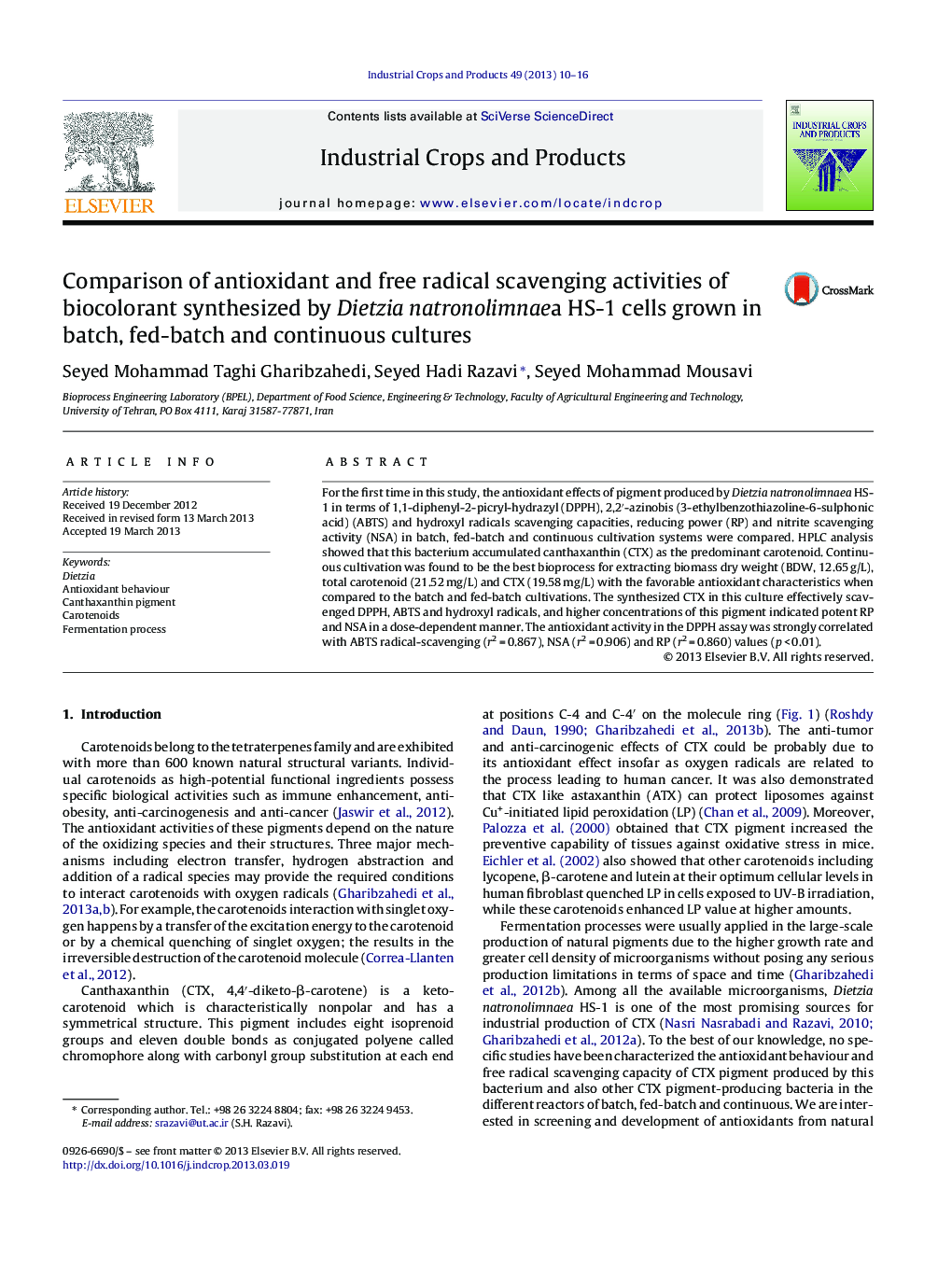| Article ID | Journal | Published Year | Pages | File Type |
|---|---|---|---|---|
| 6377462 | Industrial Crops and Products | 2013 | 7 Pages |
Abstract
For the first time in this study, the antioxidant effects of pigment produced by Dietzia natronolimnaea HS-1 in terms of 1,1-diphenyl-2-picryl-hydrazyl (DPPH), 2,2â²-azinobis (3-ethylbenzothiazoline-6-sulphonic acid) (ABTS) and hydroxyl radicals scavenging capacities, reducing power (RP) and nitrite scavenging activity (NSA) in batch, fed-batch and continuous cultivation systems were compared. HPLC analysis showed that this bacterium accumulated canthaxanthin (CTX) as the predominant carotenoid. Continuous cultivation was found to be the best bioprocess for extracting biomass dry weight (BDW, 12.65 g/L), total carotenoid (21.52 mg/L) and CTX (19.58 mg/L) with the favorable antioxidant characteristics when compared to the batch and fed-batch cultivations. The synthesized CTX in this culture effectively scavenged DPPH, ABTS and hydroxyl radicals, and higher concentrations of this pigment indicated potent RP and NSA in a dose-dependent manner. The antioxidant activity in the DPPH assay was strongly correlated with ABTS radical-scavenging (r2 = 0.867), NSA (r2 = 0.906) and RP (r2 = 0.860) values (p < 0.01).
Related Topics
Life Sciences
Agricultural and Biological Sciences
Agronomy and Crop Science
Authors
Seyed Mohammad Taghi Gharibzahedi, Seyed Hadi Razavi, Seyed Mohammad Mousavi,
